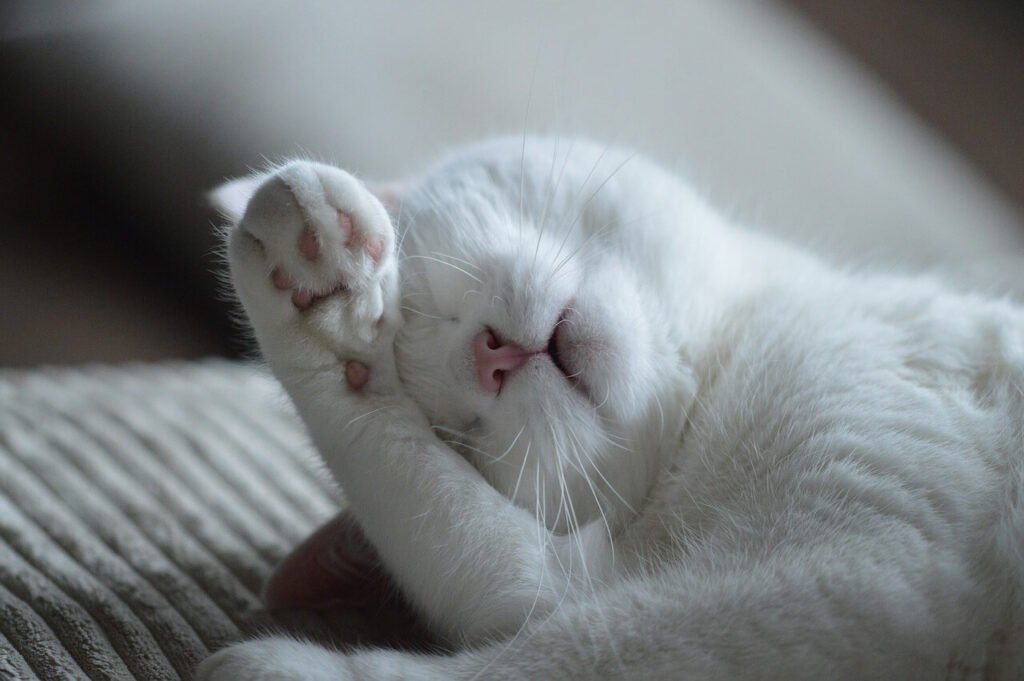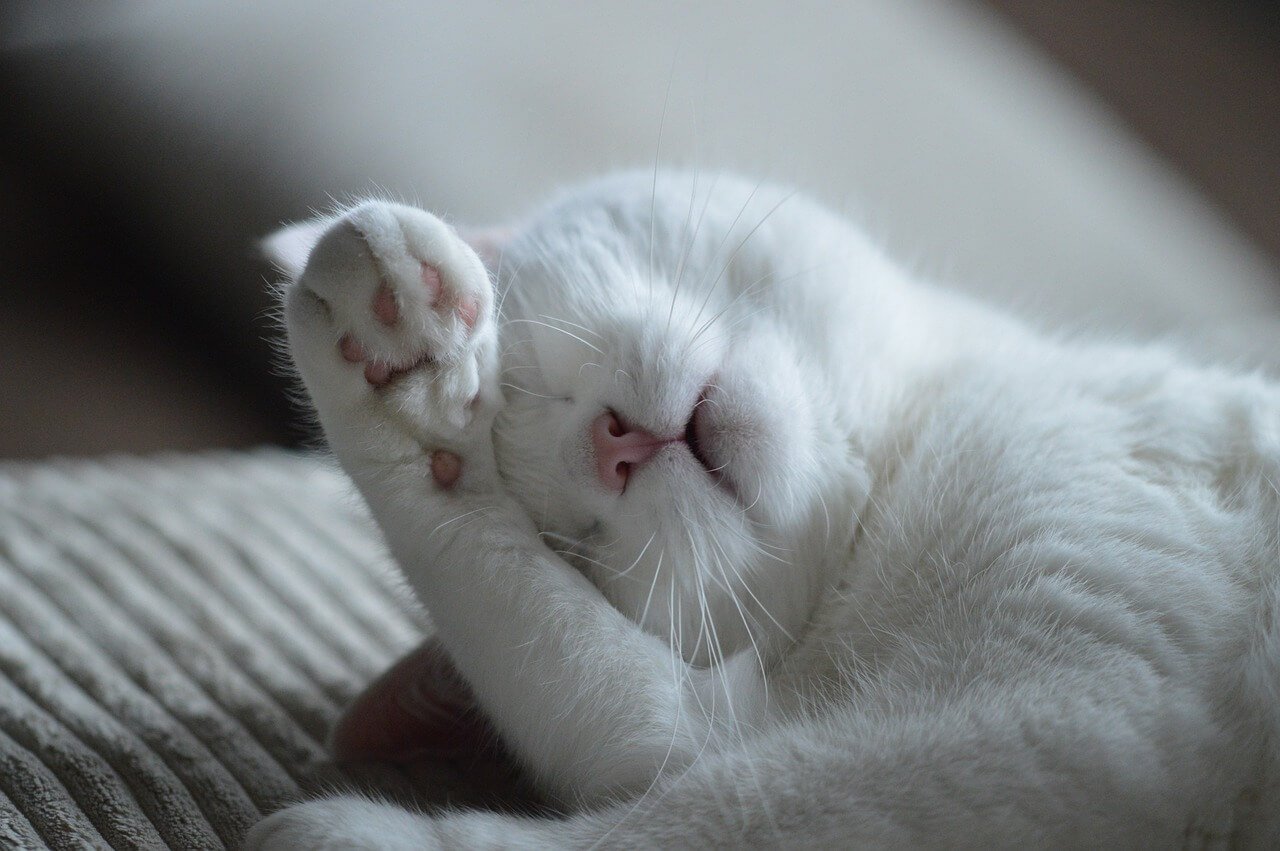Why Does My Cat Cuddle With Me? The Heartwarming Reasons Behind This Behavior
Few things are as comforting as having your feline friend curl up in your lap or snuggle close while you relax. Cats, often perceived as independent and aloof, can surprise us with their affectionate cuddling habits. But why does your cat choose to cuddle with you? Is it purely for warmth, or is there more to this endearing behavior? Understanding the reasons behind your cat’s desire to cuddle not only deepens your bond but also helps you better meet their emotional needs. In this article, we’ll explore the science, psychology, and practical aspects of why cats cuddle—and what it means for your relationship.
The Bonding Power of Cuddles: Why Your Cat Seeks Connection
Cats may seem like solitary creatures, but they form strong bonds with their human companions. Cuddling is one of the many ways they express trust, affection, and a desire for closeness. Here are some emotional and social reasons why your cat might cuddle with you:
Affection and Trust :
Cats reserve their cuddles for people they feel safe and comfortable around, showing their deep trust in you.Comfort and Security :
Being near you provides a sense of safety, especially during stressful situations or unfamiliar environments.Kittenhood Memories :
Kittens often cuddle with their littermates for warmth and security; adult cats carry this instinct into their relationships with humans.Marking You as Theirs :
Cats use scent glands on their cheeks and bodies to mark you as part of their “family,” reinforcing their bond with you.Seeking Attention :
Some cats cuddle to get your focus, whether it’s for petting, playtime, or simply being noticed.
These behaviors highlight the emotional depth of cats and their need for connection. By cuddling, they’re expressing love and strengthening the bond you share.
Warmth and Survival: The Practical Side of Cuddling
While cuddling is often an emotional act, it also serves practical purposes rooted in a cat’s instincts and biology. These physical reasons explain why your cat might seek out your warmth and proximity.
Body Heat :
Cats are naturally drawn to warm spots, and your body heat makes you an ideal cuddle partner.Survival Instincts :
In the wild, staying close to others provides protection from predators and harsh conditions.Health Benefits :
Cuddling releases oxytocin, the “feel-good” hormone, which benefits both you and your cat.Energy Conservation :
By staying close to you, your cat conserves energy by avoiding unnecessary movement.Grooming Opportunities :
Cats often groom themselves or others during cuddling sessions, maintaining hygiene and strengthening bonds.
These instinctual and physical factors show that cuddling isn’t just about emotions—it’s also about survival and comfort. Your cat’s cuddles are a blend of practicality and affection.
Check this guide 👉Why Is My Cat Losing Hair? Best 7 Health Tips!
Check this guide 👉Why Is My Cat Drooling When I Pet Him? Best 7 Expert Tips!
Check this guide 👉Why Are My Cats Whiskers So Long? Best 7 Expert Tips!

Emotional Reasons for Cuddling | Physical Reasons for Cuddling |
|---|---|
Affection and trust | Body heat |
Comfort and security | Survival instincts |
Marking you as theirs | Health benefits (oxytocin release) |
Seeking attention | Energy conservation |
Kittenhood memories | Grooming opportunities |
Decoding Feline Signals: How to Know Your Cat Wants to Cuddle
Cats communicate their desire to cuddle through subtle cues and behaviors. Recognizing these signs can help you respond appropriately and strengthen your bond. Here’s what to look for:
Head Bunting :
Rubbing their head against you is a clear sign they want your attention and affection.Purring :
A soft, rhythmic purr often signals contentment and a desire for closeness.Slow Blinking :
A slow blink is a “cat kiss” and an invitation to engage with them.Following You Around :
If your cat trails behind you, they might be seeking quality time together.Lying Down Near You :
Positioning themselves close to you indicates they’re ready for a cuddle session.
By paying attention to these signals, you can foster a deeper connection with your cat. They rely on you to notice and reciprocate their affectionate gestures.
How to Nurture Cuddles Without Overwhelming Your Cat
While cuddling is a wonderful way to bond, it’s important to respect your cat’s boundaries and preferences. Here are some tips to encourage healthy cuddling habits:
Respect Their Space :
Allow your cat to initiate cuddles rather than forcing interaction when they’re not interested.Create a Cozy Environment :
Provide soft blankets or designated cuddle spots where your cat feels safe and comfortable.Reward Affection :
Offer treats or gentle praise when your cat cuddles, reinforcing positive behavior.Watch for Stress Signals :
Hissing, growling, or flattening ears indicate discomfort; back off if you notice these signs.Be Patient with New Cats :
Newly adopted cats may take time to warm up to cuddling; give them space to build trust.
By fostering a respectful and nurturing environment, you can ensure that cuddling remains a positive experience for both you and your cat.
Respecting Boundaries: How to Recognize When Your Cat Needs Space
While cuddling is a sign of affection, not all cats want to engage in this behavior all the time. It’s important to recognize when your cat is signaling that they need some personal space. Ignoring these signs can lead to stress or discomfort for your feline friend. Here are some indicators that your cat may not be in the mood for cuddles:
Flattened Ears :
Flattened ears often indicate irritation or discomfort, suggesting your cat wants to be left alone.Tail Flicking or Thumping :
A rapidly flicking or thumping tail can signal annoyance or agitation.Hiding Behavior :
Cats that retreat to secluded spots are likely seeking solitude rather than interaction.Growling or Hissing :
Vocal warnings like growls or hisses are clear signs your cat feels threatened or overwhelmed.Walking Away :
If your cat moves away when you approach, they’re likely not interested in physical contact at the moment.
Understanding and respecting these signals helps maintain a healthy relationship with your cat. Giving them space when needed builds trust and ensures cuddles remain a positive experience.
The Human Side of Cuddling: How It Enhances Your Well-Being
Cuddling isn’t just beneficial for your cat—it also has significant advantages for you as a pet owner. The bond you share during these moments can improve your mental and emotional health in surprising ways. Here’s how cuddling with your cat positively impacts you:
Stress Reduction :
Interacting with your cat releases oxytocin, which lowers cortisol levels and reduces stress.Improved Mood :
Petting your cat can boost serotonin and dopamine, chemicals associated with happiness and relaxation.Lower Blood Pressure :
Studies show that pet owners who cuddle their cats often experience reduced blood pressure.Sense of Purpose :
Taking care of your cat fosters a sense of responsibility and fulfillment in your daily life.Better Sleep Quality :
Sharing cozy moments with your cat before bed can help you relax and sleep more soundly.
These benefits highlight how cuddling creates a mutually rewarding relationship, enhancing both your cat’s and your own well-being. Cherish these moments—they’re good for your health!
Setting the Stage: How to Make Your Home More Inviting for Cuddles
Your home environment plays a big role in encouraging cuddling behavior from your cat. By making your space comfortable and inviting, you increase the likelihood of quality cuddle sessions. Here are some tips to create a cuddle-friendly atmosphere:
Provide Soft Bedding :
Plush blankets or cushions give your cat inviting spots to curl up near you.Minimize Noise and Distractions :
A calm, quiet environment makes your cat feel safer and more inclined to cuddle.Use Calming Scents :
Products like pheromone diffusers or lavender sprays can help soothe your cat and promote relaxation.Offer Elevated Perches :
Cats love high vantage points; placing perches near you encourages closeness without overwhelming them.Maintain a Routine :
Cats thrive on consistency; regular feeding, playtime, and cuddle sessions build trust and predictability.
A cozy and predictable environment reassures your cat, making them more likely to seek out cuddles. Small adjustments can go a long way in fostering a loving connection.
Frequently Asked Questions About Cats Cuddling
Why does my cat only cuddle at night?
Cats are crepuscular, meaning they’re most active at dawn and dusk, so nighttime cuddles align with their natural rhythms.
Is it normal for my cat to suddenly stop cuddling?
Changes in behavior could indicate stress, illness, or shifts in routine; consult a vet if concerned.
Can I train my cat to cuddle more?
While you can encourage affection, cats have individual personalities, and some prefer less physical contact.
Should I worry if my cat doesn’t cuddle?
Not all cats enjoy cuddling; they express love in other ways, such as following you or sitting nearby.
Why does my cat knead while cuddling?
Kneading is a comforting behavior rooted in kittenhood, signaling relaxation and trust.
Final Thoughts: Celebrating the Joy of Cuddling
Cuddling with your cat is one of life’s simplest yet most rewarding pleasures. Whether driven by affection, trust, or the need for warmth, your cat’s cuddles are a testament to the special bond you share. By understanding the reasons behind this behavior and respecting your cat’s unique personality, you can nurture a relationship built on mutual love and trust. So the next time your feline companion curls up beside you, take a moment to cherish the connection—you’re experiencing a rare gift that only cats can offer.
Understanding Cryptosporidium in Cats: Best 7 Expert Tips! – Spot symptoms, treat safely, and stop parasite spread in your home.
Understanding Cryptosporidium in Dogs: Best 7 Expert Tips! – Learn symptoms, treatment & prevention for this stubborn gut parasite.
Understanding Syringomyelia in Cats: Best 7 Expert Tips! – Recognize signs, manage pain, and support your cat’s neurological health with vet-backed guidance.
Understanding Syringomyelia in Dogs: Best 7 Expert Tips! – Expert insights on symptoms, MRI diagnosis, pain management & quality of life.





